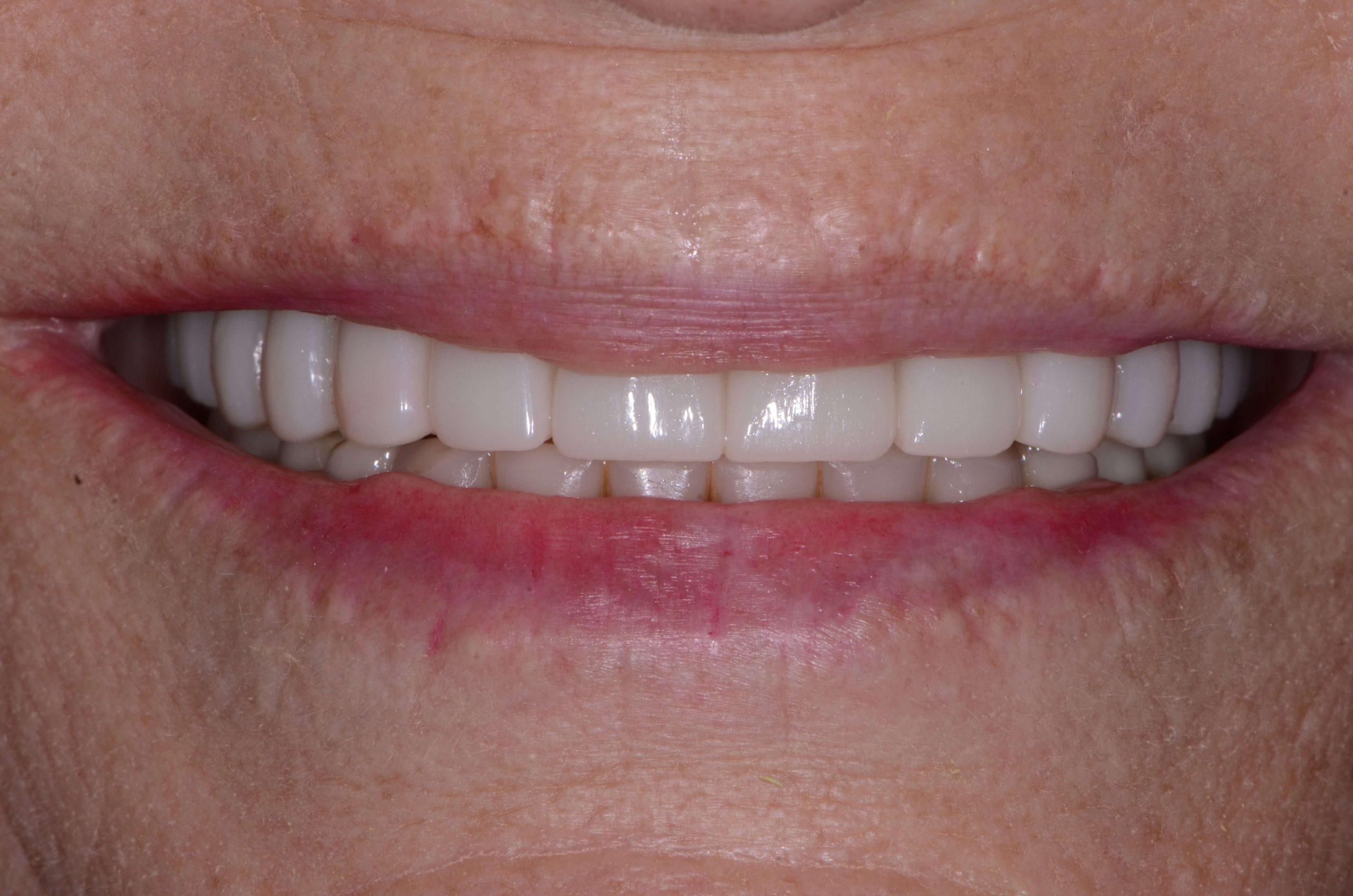
Working With the Lab on Extreme Parafunction: Part 2
A patient presented to my practice with upper and lower implant hybrids and a long history of fracturing. I myself struggled with needing to replace her dentures regularly up until the point I decided something had to change.
Parafunction, Occlusion, and a Low Smile Line
The patient clearly needed some type of intervention. I looked at mounted models and evaluated her history of extreme parafunction to determine what we should do next. She had been restored in her hybrids with canine guidance and relatively steep anterior guidance. In light of all these factors, I recommended resetting the upper hybrid, opening her vertical, and both shallowing and balancing her occlusion.
These adjustments would hopefully make a big difference in her ability to maintain dentures for longer periods of time. There wasn’t much space to open vertical, but with the little we had we managed to lengthen the time between fractures from months up to once a year. That was a huge achievement on its own, but we knew we could do more. We had also made her an occlusal appliance that went over her upper hybrid. She consistently wore it, which was beneficial.
I shared this story with Wiand of Wiand lab and he was able to give me an important breakthrough. He asked me how high her smile line was and I told him it was very low. He had an idea that made all the difference. We took upper and lower impressions of the hybrids, bite records, facebow, fixture level impression on the upper arch, and gathered shade information.
Wiand lab removed everything from the original bar. Then, I had them send the entire case to Gold Dust Dental Lab. There, they waxed the upper to full contour over the bar. After this, the case was returned to Wiand, where an injection-molded composite was used to fabricate a one-piece upper over the patient’s original bar.
This seems to have finally done it for keeping my patient out of the dental chair. No maintenance has been necessary since. By relying on the advice of my fantastic partners in both dental labs, I was able to help a tricky patient. The lesson here is that patients who are hard on their teeth will be hard on restorations. Similarly, implants aren’t going to magically resolve issues for occlusally high-risk patients.

Related Course
E2: Occlusal Appliances & Equilibration
DATE: February 1 2026 @ 8:00 am - February 5 2026 @ 2:30 pmLocation: The Pankey Institute
CE HOURS: 44
Dentist Tuition: $ 7500
Single Occupancy with Ensuite Private Bath (per night): $ 355
What if you had one tool that increased comprehensive case acceptance, managed patients with moderate to high functional risk, verified centric relation and treated signs and symptoms of TMD? Appliance…
Learn More>






